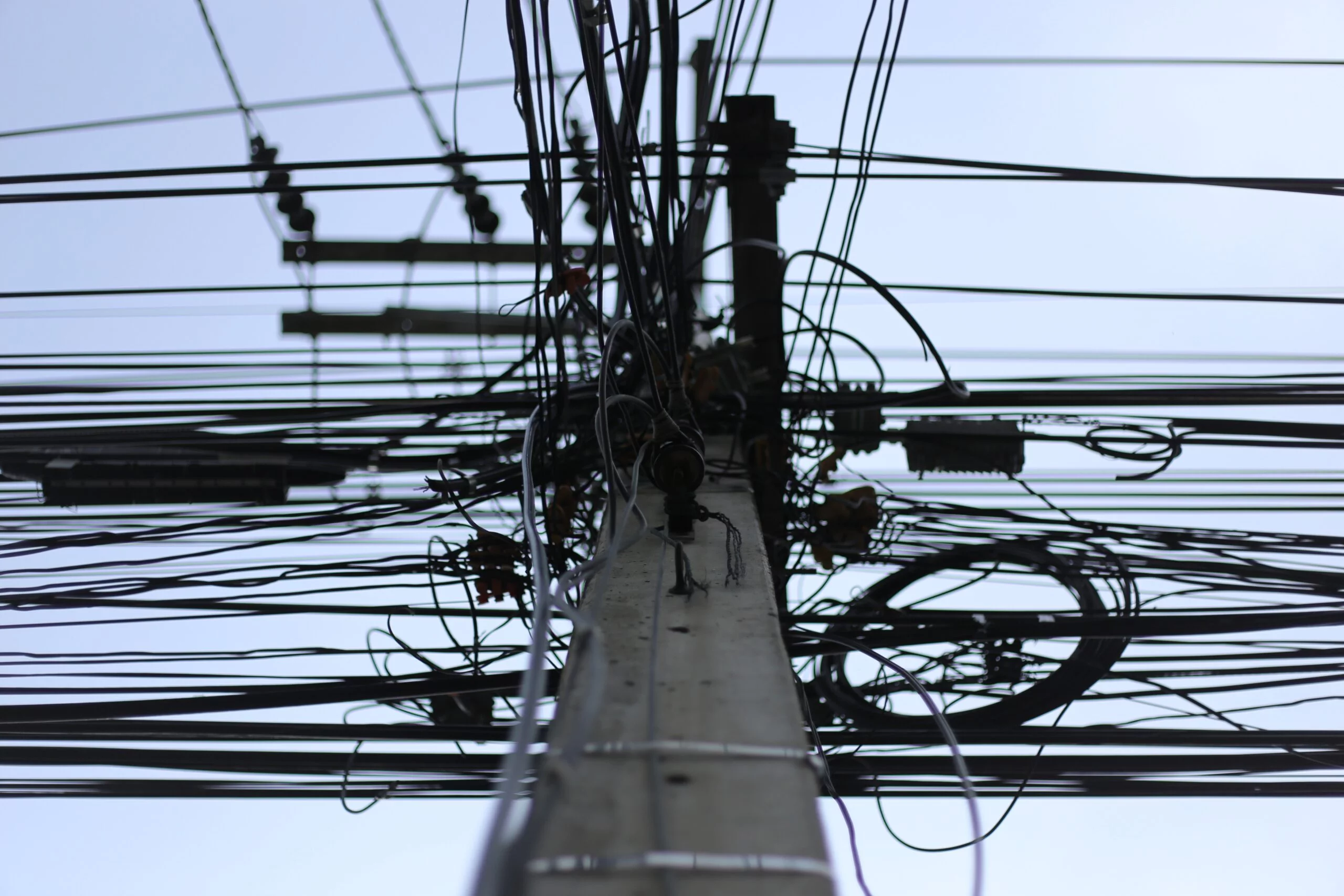Between increased electric demand and a surge in extreme weather events, utility providers face a mounting challenge to enhance grid resiliency. In the U.S., nearly 83% of all outages between 2000-2021 were attributed to weather-related events. In fact, weather-related outages have increased by around 78% between 2011-2021. Because of this, the Biden Administration has called for real-time reporting on outages to better plot where and when it’s happening. In many cases, enhancing grid resiliency may come with high infrastructure costs like replacing or updating transformers and lines. Fortunately, non-wires alternatives offer an affordable, scalable solution that can build on existing energy portfolios to provide some relief.
What Are Non-Wires Alternatives?
Non-wires alternatives are, as the name suggests, technologies that don’t require the building of new wires or the required infrastructure, instead focusing on using the existing electric line infrastructure more efficiently to prevent the need for further construction. The concept of non-wires alternatives employs existing technologies to boost grid resiliency through existing energy assets on the grid like distributed energy resources (DERs), microgrids, batteries, and demand flexibility programs like demand response or managed charging built to conserve energy or load shift.
– Syd Bishop, Sr. Content Specialist, Virtual Peaker
The concept of non-wires alternatives has been around since the first electric grids were created. For example, the War of the Currents pitted innovators Thomas Edison and Nikolai Tesla against one another, split over the use of alternating versus direct current (AC/DC). Ultimately, Tesla’s alternating currents were proven the more viable of the two, although the public debate escalated to include various demonstrations of the potential dangers of alternating currents, including cruel stunts perpetrated by Edison to undermine Tesla. During that time, Tesla began experimenting with wireless power, electricity transmitted using “radio frequency resonance to create electrical energy through to coils to generate high voltage, high-frequency currents.”
Unfortunately, Tesla’s experiments didn’t yield the results that he hoped—the wireless transmission of energy—although they did lead to breakthroughs in wireless communications. Still, these experiments illustrate that infrastructure challenges have been intrinsic to the industry since the beginning. Fortunately, we can use these lessons to better inform the next wave of non-wires alternatives.
Grid Resiliency & Increased Demand
There are a variety of potential vulnerabilities to the electric power grid, including physical threats, cyberattacks, and the existential threats posed by both the increase of extreme weather events relative to climate change and the added load burden of more electric devices on the grid than ever. Non-wires alternatives offer solutions to these challenges that don’t involve costly investments in infrastructure by leveraging existing community energy assets. Let’s take a closer look at what customers want, and how non-wires alternatives can help.
Burying Lines
Often, utility customers have asked about the potential for burying lines as a solution to storm-related outages. As you might expect, burying electric lines underground comes with a high price tag, albeit one that varies from utility to utility depending on the region. A few years ago, Pacific Gas & Electric researched burying lines to avoid the rampant and increasingly common wildfires that have challenged much of the state of California. While burying lines does decrease the potential for weather-related electric outages, the actual cost in 2021 to bury around 10K miles of cable—approximately 40% of their service territory—would run between $15b and $20b.
– Syd Bishop, Sr. Content Specialist, Virtual Peaker
On top of that, lines aren’t ready to just move from the open air to the ground without some modifications. Because electricity generates heat, buried power lines require insulation to properly protect the surrounding environment, adding additional costs to an already expensive operation. Since all of these costs are passed onto consumers, customer rates would rise, without any guarantee that the outcome will prevent all outages. While buried lines will lower the potential for outages, non-wires alternatives are less invasive to the community, far more affordable, and provide opportunities for increased revenue, lowered peak energy spending, and enhanced grid resilience all by tapping into existing resources.
Losses Due To Outages
Customers affected by outages often ask for some kind of reimbursement for items lost due to power outages. In some cases, utilities offer some reimbursement for power outages, although that depends not only on the service area but the rules of whatever the governing utility commission is in that area. Irrespective of the rules that govern individual utility operations, non-wires alternatives ameliorate this potential by providing an affordable solution to the outages that drive customer dissatisfaction. Let’s take a look at how a few of those solutions might look for your operation.
Non-Wires Alternatives In Practice
Non-wires alternatives manifest in a few different ways. Demand flexibility initiatives like demand response or managed charging represent conservation efforts using the interconnectivity of the internet of things (IoT) to allow a robust distributed energy resource management system (DERMS) to control devices during peak times of consumption. Likewise, DER initiatives like virtual power plants represent non-wires alternatives that add community-generated renewable energy assets to utility energy portfolios, minimizing the need for expensive energy purchases, fuel costs, and expensive infrastructural investments while strengthening grid resiliency.
DERs & Grid Resilience
The exponential growth of the DER market signals not only a wider spread adoption of renewable energy resources but a shift in who’s buying these devices. While early-adopting prosumers once dominated the home renewable space, more consumers than ever are turning to their own solutions to mitigate the potential for outages. From solar panels to battery storage, these assets are useful as non-wires alternatives to defray expensive time-of-use rates during peak hours. Likewise, DER energy requires a fraction of total infrastructure costs to implement, whether that’s through virtual power plant functionality or more.
Managed Charging Programs
As with DER adoption, the electric vehicle (EV) market has grown at a remarkable rate. In fact, the Biden Administration has issued a statement to American auto manufacturers to increase EV production to account for 50% of all vehicles made in the U.S. by 2030. That means that within a decade, more than half of all vehicles on the road will be electric, adding a significant load to an already taxed grid. Still, just as DERs are used to defray costs, managed charging is a non-wires alternative opportunity to load shift during costly TOU hours.
Managed charging uses software solutions to determine the optimal time for vehicle charging to mitigate strain on the grid during peak hours. Just like DER and demand flexibility initiatives, this alleviates pressure on the grid thus lowering energy spending and increasing energy security.
Demand Response
Another conservation effort, demand response is a demand flexibility initiative that conserves power during peak times of usage. Using WiFi-enabled smart devices, utilities can control devices to minimize grid strain during high times of consumption. As of 2021, around 10.5 million customers were enrolled in demand response programs in the U.S. As that number continues to grow, utility program managers will have more potential resources to lower usage through time-tested conservation efforts.
Non-Wires Alternatives Conclusion
In addition to the host of applications that non-wires alternatives present, having fewer suspended lines is just attractive to the environment. Especially as urban areas suffer from transmission congestion, non-wires alternatives are more than just a load management strategy that minimizes expensive infrastructure projects, but a viable public beautification project. With so many benefits and an ever-growing potential, what is stopping your operation from investing in non-wires alternatives today?





